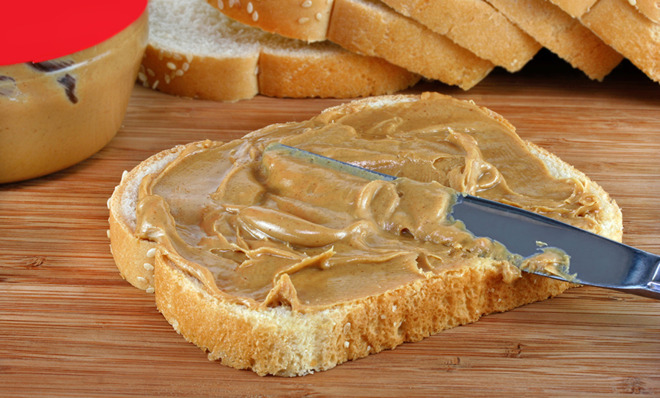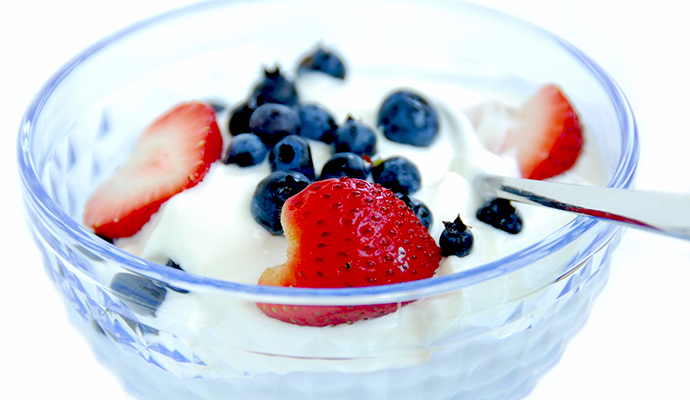The secret histories of 6 ubiquitous American foods
Bet you've never had fish-innards kê-tsiap


In much the same way most American homes have different half-filled tubes of sunblock, off-sized batteries, and calculators that can't be thrown away, most American homes have the six following foods. We may not eat them often, or even like them, but we still keep them on hand. They're just part of what make a home a home — even if we forget why.
Here, the largely forgotten histories of six American staples.
1. Tuna fish
The Week
Escape your echo chamber. Get the facts behind the news, plus analysis from multiple perspectives.

Sign up for The Week's Free Newsletters
From our morning news briefing to a weekly Good News Newsletter, get the best of The Week delivered directly to your inbox.
From our morning news briefing to a weekly Good News Newsletter, get the best of The Week delivered directly to your inbox.
During the 20th century tuna fish was one America's most purchased proteins — but it didn't happen without a dash of ingenuity. In 1903, the California Fish Company figured out steaming tuna made it white and removed most of the oil that made it taste so "fishy." So sellers claimed it really did taste like chicken, and it was cheap! The government fed it to soldiers in WWI, and they continued to eat it when they got home. It was a cheap, shelf stable, inoffensive protein that could "beef up" almost any meal it was added to.
2. Ketchup

Ketchup has been around for hundreds of years; it was just never, ever made with tomatoes. Hailing from China where it was called ke-tchup, kôechiap or kê-tsiap, ketchup was any spicy sauce that resulted from a savory food being boiled down to goo and spiced. Popular in previous centuries were mushroom ketchup, oyster ketchup, walnut ketchup, and fish-innards ketchup.
Most Westerners thought tomatoes were poisonous until the 19th century. When they finally realized they weren't, tomatoes became wildly popular, and tomato ketchup was considered not just tasty, but a health food. Unfortunately food preservation in the late 19th century was quite the opposite of healthy: ketchup was filled with mold, rot, chemicals, and even tar to make it red. Enter Mr. Henry J Heinz. Heinz was obsessed with cleanliness and quality, which is why he started selling his ketchup in his trademarked clear bottle. Americans who were used to covert packaging were drawn to the tasty sauce they could be sure was safe, and soon ketchup had a place in nearly every cupboard in America.
A free daily email with the biggest news stories of the day – and the best features from TheWeek.com
3. Peanut butter
What first got Americans hooked on peanuts was war. When the Union cut off the Confederacy's supply routes, there was precious little else to eat in the South except the nut, which at the time was grown mostly for animal feed. Northern soldiers ate them too, and brought them back home. Crushing them into "butter" is an idea that seemed to occur to any society that used peanuts, dating all the way back to the ancient Incan empire. While George Washington Carver didn't create the first peanut butter, he did use in many of his peanut inventions — but again, it took a war to popularize it. Cheap, easily transportable, and high in protein, peanut butter was used liberally in soldier's rations in both World Wars.
4. Yogurt

For a long time, yogurt was considered a sour foreign food, eaten by immigrants and sometimes prescribed by doctors for stomach ailments. It took one Mr. Daniel Carasso to make it an American staple. His father had started a yogurt company in Greece, and named it "Danone," or "little Dan" after his son. When Little Dan grew up, he took his father's yogurt making business to France, where it became very successful. Until the Nazis invaded.
So Daniel moved to the United States and Americanized his company's name into "Dannon." He sold small glass jars of plain yogurt from a factory in Brooklyn. Americans weren't crazy about it until he added some strawberry jam to the bottom of each jar in 1947. That, coupled with the perceived health benefits and ease of purchase, turned yogurt into one of America's favorite healthy snacks. Carasso's himself might be considered the finest testament to the health benefits of yogurt; he died in 2009, age 103.
5. Saltines
Flat, dry bread has existed for as long as there have been grains with which to make it. Saltines themselves aren't even a culinary twist; they are just the first officially branded soda cracker, which Americans had been snacking on for years. The brand was bought by the National Biscuit Company (NaBisCo!) in the late 19th century. Nabisco eventually lost the brand name Saltine due to trademark erosion; the success of the product resulted in everyone calling any squared salted cracker a "saltine." Saltines might have been destined to be a home staple no matter what; snack-size in the time before snacks, cheap, and shelf-stable. But it was the Great Depression that really helped lock saltines in our larders. Diners would put saltines out for customers, allowing hungry people to buy something inexpensive like soup, and thicken it into something a little more filling.
6. Campbell's soup
With all the soup choices available to Americans now, from fancy imported butternut squash to stew made right in the store, it's amazing how many of us just don't feel right without some Campbell's in our cupboards. Campbell's Chicken Noodle Soup isn't much compared to more modern brands. The noodles are broken and the chicken is a smattering of miniscule chunks, but it's what we love. It's what we remember. We owe the very name "Chicken Noodle Soup" to Campbell's, after a radio announcer in the 1940s misspoke its actual name "Campbell's Noodle with Chicken Soup." We all have Campbell's because they were the first to figure out the best process of condensation in 1897. If you removed the water from soup, you removed the bulk of its shipping cost, making it cheap for manufacturer and buyer alike. A warm and filling "meal" to crumble your saltines into, no matter how poor or far away from home you were.
Therese O'Neill lives in Oregon and writes for The Atlantic, Mental Floss, Jezebel, and more. She is the author of New York Times bestseller Unmentionable: The Victorian Ladies Guide to Sex, Marriage and Manners. Meet her at writerthereseoneill.com.
-
 Political cartoons for December 6
Political cartoons for December 6Cartoons Saturday’s political cartoons include a pardon for Hernandez, word of the year, and more
-
 Pakistan: Trump’s ‘favourite field marshal’ takes charge
Pakistan: Trump’s ‘favourite field marshal’ takes chargeIn the Spotlight Asim Munir’s control over all three branches of Pakistan’s military gives him ‘sweeping powers’ – and almost unlimited freedom to use them
-
 Codeword: December 6, 2025
Codeword: December 6, 2025The daily codeword puzzle from The Week
